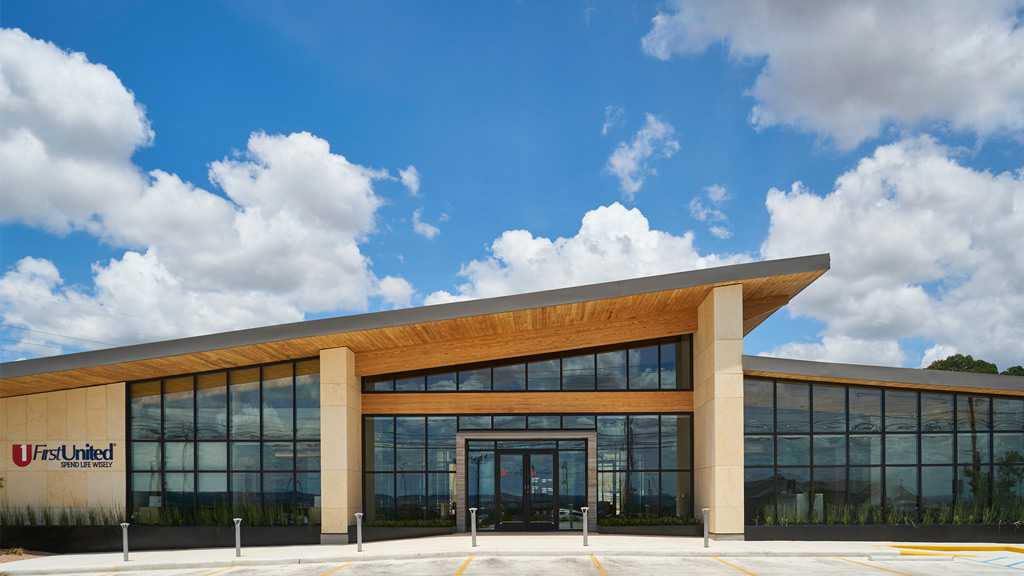Net Zero Design Is the Key to Building a Resilient, Post-Pandemic Future
April 04, 2022 | By Andy Cohen
Editor's note: this article was originally published on LinkedIn and our blog in June 2021.
In April 2022, the United Nations’ International Panel on Climate Change (IPCC) released its sixth assessment report, highlighting the significant opportunities to reduce emissions in cities and other urban areas, as well as the construction industry itself. The 10 steps outlined below can help set the building industry on a path to drastically reducing carbon emissions by 2030.
Hardship, change, growth: the past year upended our lives and opened our eyes to our strengths, our vulnerabilities, and our opportunities to improve the world around us. The pandemic demonstrated how the natural world can bring the global economy to its knees. Now, if we don’t pay attention, rising seas and warming temperatures our planet is facing could do the same. To avoid disaster, forward-thinking real estate leaders are seeking strategies to reduce the energy consumption of their portfolios.
Addressing climate change is the business imperative of our time. By 2050, between $66 billion and $106 billion worth of existing coastal property in the U.S. will likely be below sea level. Fast forward to the year 2100, and that prediction jumps as high as $507 billion. In the post-pandemic world, as we re-envision the way that buildings, developments, and even cities promote health, we must also reimagine how the built environment supports the long-term resilience of our communities, livelihoods, and resources.
Since well before COVID-19 was part of the global lexicon, research has shown how green building strategies improve the health and well-being of occupants while also reducing carbon. Given that buildings are responsible for some 40% of all greenhouse gas emissions — from the materials used in construction to everyday operational energy needs — our industry and our clients are uniquely positioned to pave the way toward a healthier, more resilient future.
Gensler is forging ahead into this new era of smart sustainability. Our 2020 portfolio is already designed to save over 17 million metric tons of CO2 from being emitted on an annual basis—an important milestone on the path toward our firm’s aggressive goal of eliminating all carbon emissions in our work by the year 2030. Net zero energy buildings are a pillar of our approach. By leveraging renewable energy sources and efficient design choices, the next generation of buildings can achieve net zero energy status, producing enough clean energy — free of fossil fuels — to compensate for the structures’ annual energy consumption.
By starting with these 10 simple steps, developers and designers together can elevate a typical project to net zero energy.
Understand your building’s energy profile. Determine energy demands and plan to use on-site or grid renewables to cover them.
Create an energy budget. Assess the energy use goal for each space, then consider how much electrical power the space can generate.
Orient your building to its surrounding climate. Seek out building forms and placement that minimize heat gain, passively reduce energy demand, and maximize renewable energy generation.
Use building energy modeling to select your envelope. Early in the design, collaborate with engineers and energy modelers to optimize the building shell, integrate progressive mechanical systems, and assess opportunities for renewable generation.
Introduce exterior shading. Build shading into the structure through roof overhangs, fins, louvers, and more to reduce reliance on cooling systems and bounce daylight deeper into the space.
Design for daylight. Strategically place windows, light shelves, and solar tubes to reduce the need for electric illumination.
Consider outdoor programming. Placing atriums, staircases, and other areas outside of the conditioned space can significantly reduce cooling requirements.
Boost natural ventilation. Plan for fresh air to offset costs of heating and cooling for four to six months out of the year, depending on local climates. This also offers health and wellness benefits to users—especially in the post-pandemic world.
Reduce plug loads. Smart sensors and digital controls give tenants control over thermostats, lighting, and more and can help reduce usage when spaces are vacant.
Prioritize whole systems over localized solutions. Considering resilience from the start, incorporate closed-loop and recovery systems that can harvest waste from one system to use as an energy source for another.
Future-minded business leaders, real estate developers, and investors recognize the threat posed by the changing climate. As a result, they are embracing the opportunity to invest in spaces and structures that use less energy, are built with healthier materials, and can adapt to severe weather events.
With companies ever more focused on environmental, social, and governance (ESG) considerations, the value proposition of resilient design is undeniable. And as governments at every level across the globe continue implementing stricter regulations on emissions, designing for a more sustainable future protects the long-term viability of investments. Buildings and developments that don’t prioritize design resilience will lose value as they come to be considered obsolete, uninsurable, and unoccupiable.
For media inquiries, email .

